DataKinetics’ tableBASE
Pure In-Memory Solution
tableBASE
DataKinetics tableBASE is a ‘pure’ in-memory solution for today’s mainframe challenges.
Most shops are using the mainframe’s in-memory features — like database buffering and Db2v12 in-memory features. Do they make a difference? Sure they do.
But are your mainframe performance-cost challenges no longer a concern? You’ll probably agree that there is room for improvement.
So what can you do to improve performance-cost picture beyond your best efforts so far?
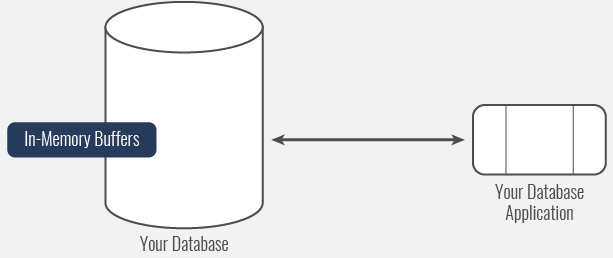
Pure In-Memory Technology
Take your in-memory employment to the next level—using tableBASE—DataKinetics’ “pure” in-memory technology.
tableBASE is a low-risk, high-reward solution that leverages all of your current assets as they are now – your database applications, your databases and your mainframe systems.
The cost? Changing a few SQL calls – can be done in minutes, once you’ve figured out where your bottlenecks actually are.
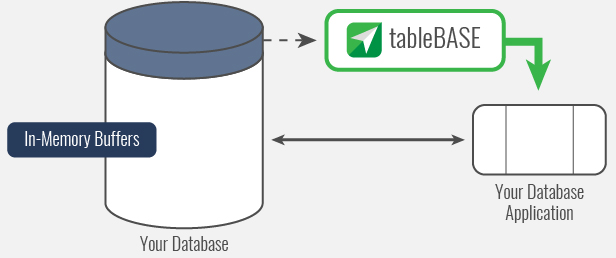
Take your in-memory employment to the next level—using tableBASE—DataKinetics’ “pure” in-memory technology.
tableBASE is a low-risk, high-reward solution that leverages all of your current assets as they are now – your database applications, your databases and your mainframe systems.
The cost? Changing a few SQL calls – can be done in minutes, once you’ve figured out where your bottlenecks actually are.

So how does tableBASE work?
First, let’s look at your mainframe’s memory:
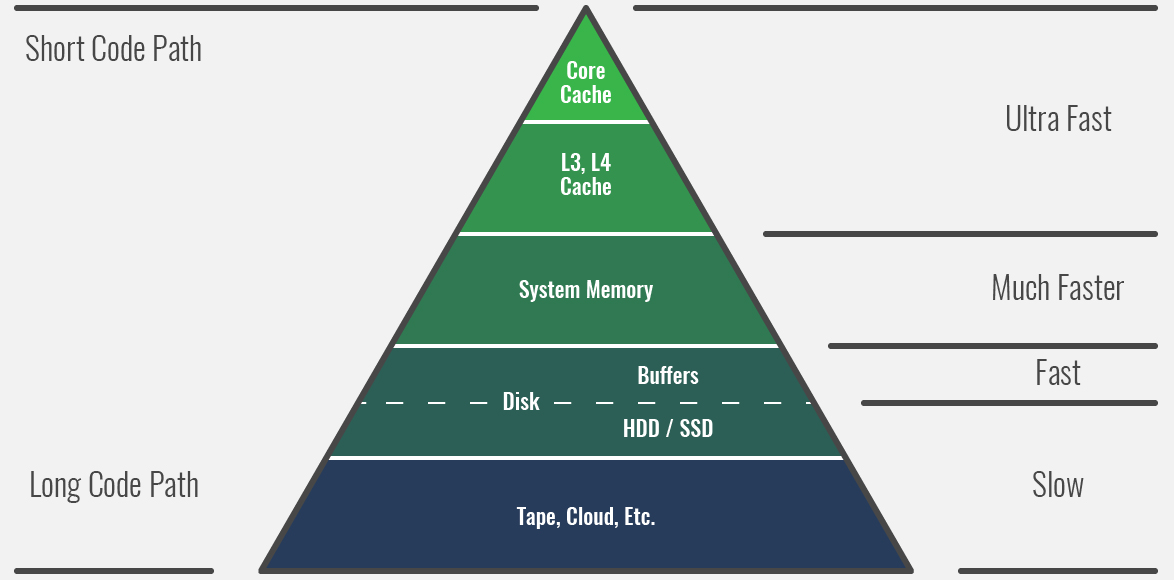
Memory usage in the Mainframe
There are several levels of in-memory processing.
Your buffers are faster than I/O, but you can access your data must faster than that…
Shortening the code path makes all the difference. tableBASE operates in System Memory, and—under the right conditions—even in L3/L4 Cache memory. That’s where the performance comes from.
Now what about that code path?
Learn more by reading our tableBASE Whitepaper
tableBASE code path

tableBASE uses a very short code path.
The top path is a typical DBMS code path used by most of your data accesses (including your buffered data)—it consumes typically 10,000–100,000 machine cycles.
The bottom path is the high-performance in-memory code path, much shorter—it consumes typically 400–500 machine cycles.
That’s where the reduced resource usage and reduced cost comes from.
This applies to an infinitesimally small amount of your data, but it can make a BIG difference.
tableBASE improves access to small amounts of your data
Your Reference Data comprises about 5% of your total data. It changes infrequently (virtually RO), and is accessed often.
Your Transaction Temporary Data comprises an insignificant % of your total data (it is created, processed, and then deleted), but it generates a high volume of data accesses.
tableBASE accelerates the access to this data.
Learn more by reading our tableBASE Whitepaper
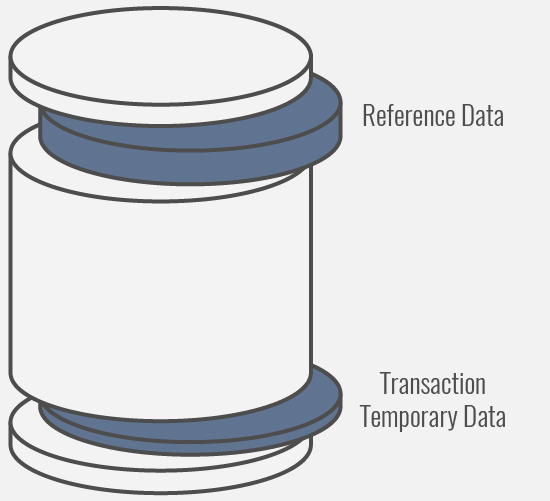
Learn more by reading our tableBASE Whitepaper
tableBASE Data Access Acceleration
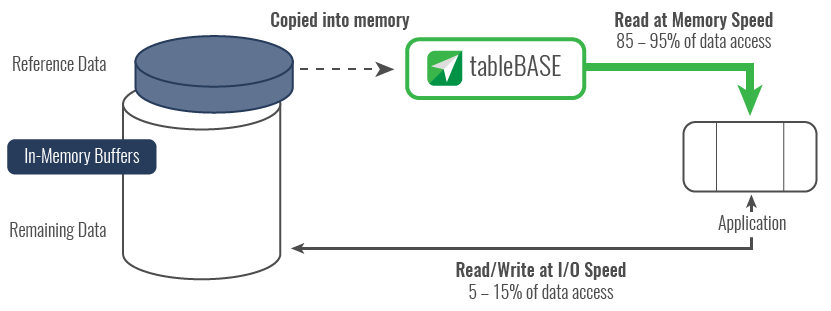
Reference data is copied from your database into tableBASE in-memory tables. These tables are RO, and can be updated from the database as needed. By changing one SQL call, that data is accessed by your application(s) 100x faster than before.
How much of a difference can that make?
Use Case: Credit Card Processing
A top-three credit card processing company was able to cut their main reconciliation batch job running time by orders of magnitude by introducing tableBASE into their systems.
Challenge:
Reconciliation batch processing taking too long.
Solution:
Copy a table describing the credit card options in the database into a tableBASE table. (each transaction required data from that table)
Results:
97% reduction in elapsed time—a batch job that took 8 hours to complete now takes 15 min.

Learn more about tableBASE Pure In-Memory Technology

